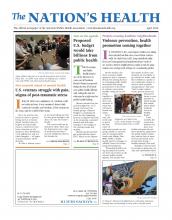From pictures to videos to status updates, social media is increasingly becoming second nature for sharing information as it happens. Now, demonstrating just how deeply social media can integrate into real life, a new campaign asks youth to share information about their condom use.
With a goal of promoting safe sex, Planned Parenthood of the Great Northwest marked National Condom Week in February by launching Where Did You Wear It? The new campaign, online at www.wheredidyouwearit.com, kicked off by distributing 55,000 condoms to community colleges and universities throughout western Washington. The condoms include barcodes that can be scanned by users’ smartphones to connect them to a mobile website. Similar to the location-based functionality of Foursquare or Facebook Places, the site allows condom users to anonymously “check in” their safe sex activity.
The campaign targets college-age students and older teens — two groups already comfortable with social media — to promote healthy sexuality and the initiative’s “Safe sex happens. Be proud to wear protection” tag line. As condom users check in, the information shows up on the website’s map, which is searchable by gender, sexual orientation, approximate age, location and other filters. Based on provided information, condom users from 48 states and six continents checked in during the first week of the campaign. The site also offers information on how to use a condom correctly, provides a list of nearby Planned Parenthood health centers where condoms are available and includes a link to a page with condom information on plannedparenthood.org.
The campaign attempts to create “some fun” around making responsible decisions, said Nathan Engebretson, new media coordinator for Planned Parenthood of the Great Northwest.
“Condoms are an essential tool in preventing unintended pregnancy and stopping the spread of sexually transmitted infections, including HIV,” Engebretson said. “We hope the site promotes discussions within relationships about condoms and helps to remove perceived stigmas that some people may have about condom use.”
But increasing condom use is only one part of a larger sexual health and education equation, Engebretson said, noting that significant barriers exist in changing behaviors and thereby reducing unintended pregnancy and sexually transmitted infection rates.
“Even if someone has access to condoms, and knows how to properly use them with a partner, she or he may still choose not to,” Engebretson said, noting that the map is intended to provide a visual representation that safe sex happens.
“Planned Parenthood wants users to be part of the solution and to be smart, sexy and responsible — not just during National Condom Week but every week,” he added.
According to the Centers for Disease Control and Prevention, about 19 million new sexually transmitted disease infections occur each year in the United States, almost half of them among young people ages 15 to 24, which is the campaign’s target group. Latex condoms, when used consistently and correctly, are highly effective in preventing the sexual transmission of HIV, the virus that causes AIDS. In addition, consistent and correct use of latex condoms reduces the risk of other sexually transmitted diseases.
For more information, visit www.wheredidyouwearit.com.
- Copyright The Nation’s Health, American Public Health Association









